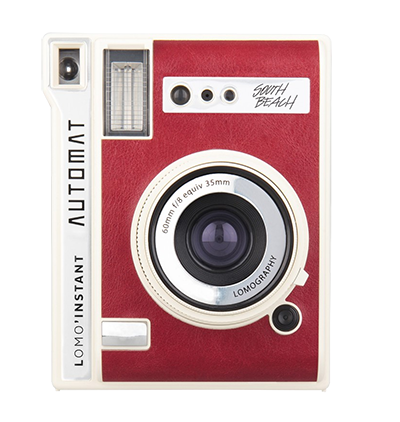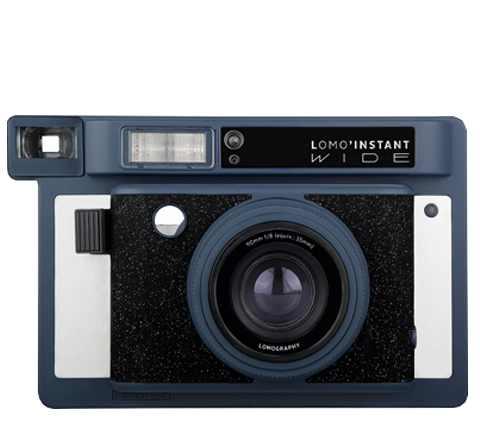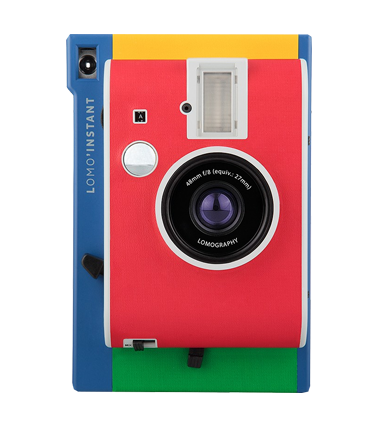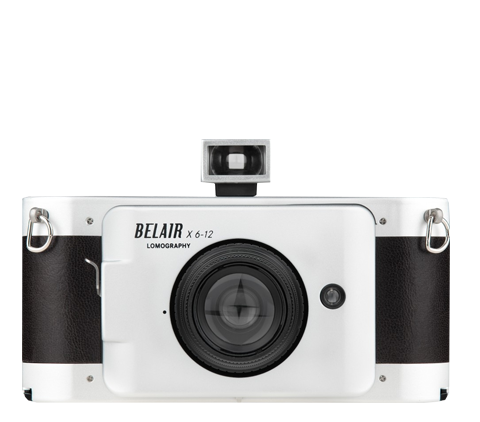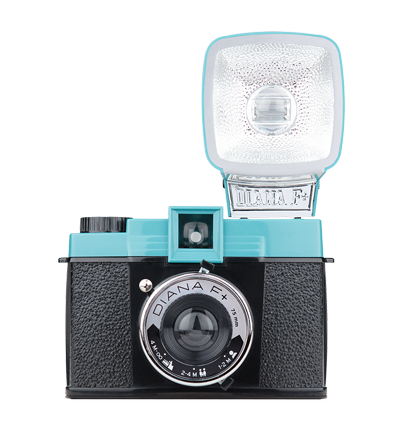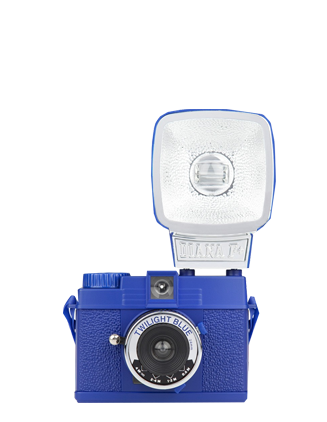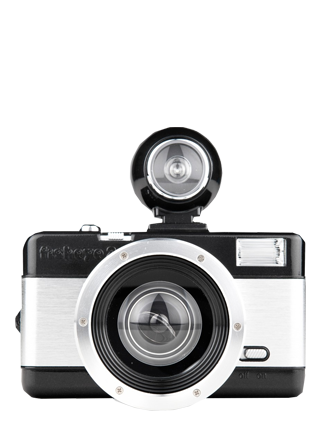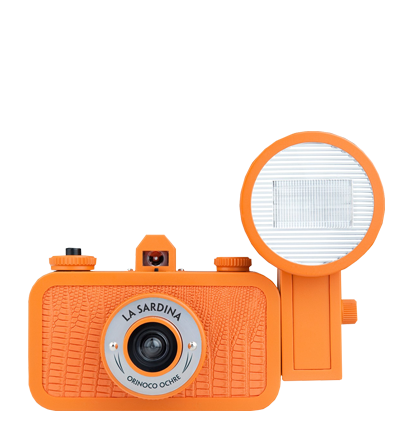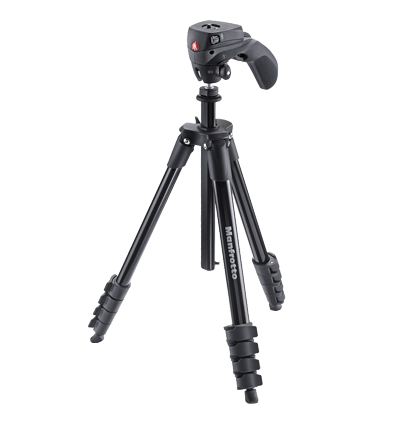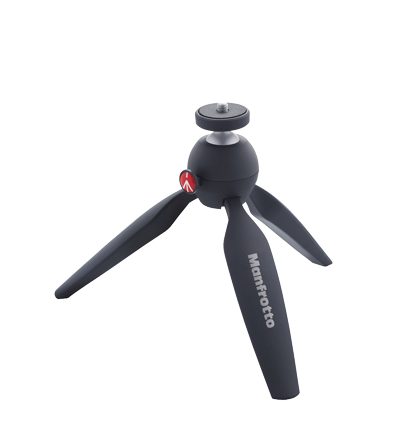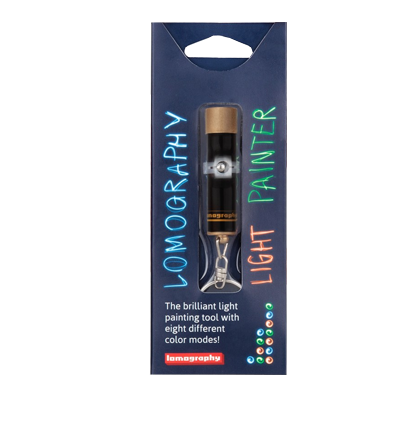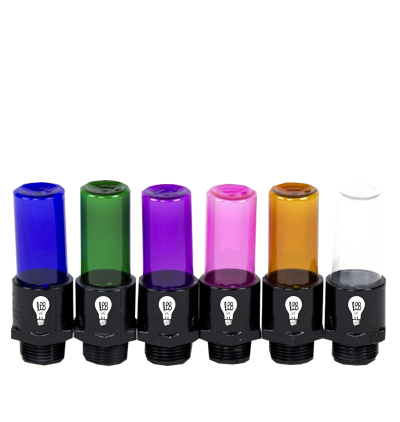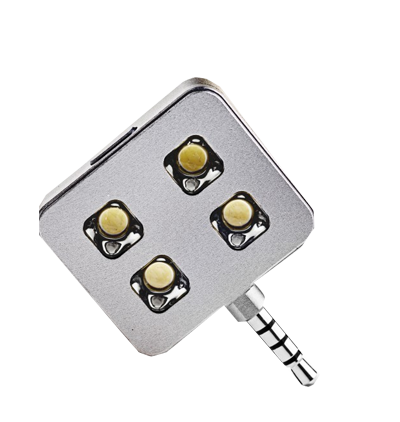Light Painting
Ein Lomography Guide
Was ist Light Painting?
Light painting is when you control the light that enters the camera’s lens and use it to "paint" something on the photograph. It’s usually done in low-light situations and is a great way to create unique photographs which explore the endless possibilities of photography. There are an infinite number of ways to light paint, beginning with your source of light and ending with what you draw!
Wie manes macht
#1
Light Painting funktioniert am besten, wenn es dunkel ist. Also warte bis zum Sonnenuntergang oder gehe in eine Dunkelkammer.
#2
Stelle deine Kamera auf einen ebenen Untergrund oder ein Stativ und gehe sicher, dass sie niemand bewegt, während du dein Lichtbild malst.
#3
Set your camera to the B shutter setting. This allows for a long exposure. It means that the shutter will stay open for a longer time so that more light will enter the lens.
#4
Grab your light source, hit the shutter release, and start getting creative. Try using a sparkler to see sparks fly!
#5
If you want to write a message on your picture, remember to do it backwards if you want it to be legible after processing. Alternately, just draw something, wiggle around or trace something — experiment!
#6
Entwickele deine Bilder und bestaune deine neuen Light Painting Fähigkeiten!
Equipment
-

Eine Kamera
You’ll need a camera with a Bulb Mode function. Any of these cameras will work!
-

You can also just use a super flat and solid surface like a table top, but for adventures further afield, you’ll need a tripod. One of these will do the trick!
-

Eine Lichtquelle
Anything that emits light will work — a torch, a glow stick, a sparkler, and so on. There are tons of special light painting tools that you could use, too! These are purpose-built and have awesome features that create super cool effects. Check them out!
Einige Anregungen
Verwende deine Umgebung, um zu malen.
If you’re in the city at night, set up your camera and take a long exposure of the light trails cars leave as they drive past. At a carnival or amusement park let a spinning ferris wheel do the painting for you.
Spiele mit Doppelbelichtungen
Take a picture of your cat, a flower, a car, whatever; then light paint a cat, flower, car on top of the initial image for a crazy effect! The possibilities are endless!
Sternenschweif-Fotografie
Set up an ultra-long exposure, position your camera on a tripod, point it up at a clear night sky and see the path that the stars make once your image is developed. Read more about star-trail photography in this article by blueskyandhardrock.
Was sollte man bei Light Paintings vermeiden
Diese Technik macht so viel Spaß! Gehe sicher, dass du dich an diese hilfreichen Tipps hältst.
Lies weiterLight Paintings mit Stahlwolle
Here’s to the bold and the brave: something to try if you’re feeling mischievous with light painting.
Read more →Commitment to Sparkle Motion: Sparkler Portraits and Light Painting
Wie lasse ich meine Fotos glänzen und funkeln? Dieser Trick zeigt dir wie es geht.
Lies weiterLight Painting: Dancing in the Dark
Hier ist ein toller Trick, der dir zeigt, wie du wirklich kreative Light Paintings mit Tanzbewegungen machen kannst!
Lies weiter
FAQ
Wie lange muss ich belichten?
This depends on what you are trying to capture. If you are drawing something, just leave your shutter open for as long as you are painting for. If you want to capture a night scene with moving objects, you should be safe with a 5-10 second exposure (depending on the speed that the light source is moving at). But these are just guidelines — experiment and find out what works best for you!
How will I know if I'm standing inside the frame properly?
Try and take a look through your viewfinder. If you are in the dark then illuminate the scene so you can see, then try and mark how far you can go vertically and horizontally so that you’ll remain inside your frame when the photo is taken.
Ich muss rückwärts schreiben? Wie mach ich das?
This can definitely be tricky! But some letters such as T,I,O,M,H,Y,U,W,X,V & A are disaffected by this mirror writing rule, so if you don’t want to bother with writing backwards just fiddle about with those letters. If you do want to use the rest of the alphabet or want to draw an image, just imagine you are looking at it in a mirror and write it that way.
Ich habe keine B Einstellung. Und nun?
Hat deine Kamera einen manuellen Auslöser? Bitte einen Freund diesen für dich herunterzudrücken während du dein Lichtbild malst.
Wann muss ich den Bildausschnitt betreten?
Da du dich in Dunkelheit befindest, wird nichts wirklich dein Bild beeinflussen bis du die Lichtquelle zum Scheinen bringst.
Welchen ISO Film soll ich verwenden?
Wer sind wir?
Lomography is a Magazine, Shop and Community dedicated to analogue photography.
It all began with a fateful encounter in the early 1990s, when two students in Vienna, Austria, stumbled upon the Lomo Kompakt Automat — a small, enigmatic Russian camera. Mindlessly taking shots from the hip, and sometimes looking through the viewfinder, they were astounded by the mind-blowing photos it produced — the colors were vibrant, with deep saturation and vignettes that framed the shot — it was nothing like they had seen before!
Zuhause angekommen wollten Freunde und Bekannte bald ebenfalls eine Lomo LC-A Kamera. Das war die Initialzündung für einen neuen fotografischen Stil, der heute unter dem Namen Lomography bekannt ist!
Glossar
Belichtungszeit
In der Zeit, während die Linse geöffnet ist, trifft das Licht auf deinen Film und belichtet ihn.
Verschlusszeit
Das ist die Geschwindigkeit, mit welcher sich die Blende öffnet und wieder schließt, und somit Licht in deine Kamera lässt. Es hängt eng mit der Belichtungszeit zusammen.
Verschluss
Den Knopf bzw. den Auslöser, den du drückst, um ein Bild zu schießen.
Blende
Das ist die Größe deiner Blendenöffnung. Diese Blendenöffnungen werden mit f Nummern bezeichnet. Eine große Blendenöffnung hat eine kleine f Nummer wie f.2 oder f.4. Eine kleine Blendenöffnung hat eine große f Nummer wie f.16 oder f.20. Wenn du möchtest, dass viel Licht in deine Linse eindringt, dann verwende eine große Blendenöffnung (mit einer kleinen f Nummer). Wenn du möchtest, dass weniger Licht eindringt, dann verwende eine kleine Blendenöffnung (mit einer großen f Nummer).
B Einstellung
The B stands for " Bulb ". The B setting allows you to manually hold the shutter open and this gives you full freedom over how long you want to expose your photo for. Some Lomography cameras which have a B setting are the La Sardina, Fisheye No.2, Sprocket Rocket, Belair Cameras, Lubitel 166+, Diana F+ and Diana Mini.
Sucher
Das ist das Fenster in deiner Kamera, durch welches du schaust, um deinen Bildausschnitt zu wählen.
Share Your Light Paintings
Join the Lomography Community to share your light paintings with millions of creatives all over the world! There are tons of artistic light paintings on our Community page, too, so it’s the perfect place to go for inspiration. Comment on your favorites to ask for tips from your fellow Lomographers!
Don’t forget to show your friends your new light painting skills on social media, too. Use the hashtags #mylomo #lomography to connect with other Lomographers on Facebook, Instagram and Twitter.
